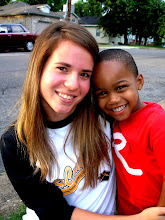First, The Central Asia Institute. The CAI's mission is to promote and support community-based education in remote areas of Pakistan and Afghanistan. Greg Mortenson is the Director of the CAI. He is also the author of the book Three Cups of Tea, which happens to be Auburn University's common book for the year. Mortenson promised the people in Pakistan that he would one day come back and built them a school and he did just that. The CAI goes into these remote areas and builds schools. The surrounding community provides the land and the labor for these schools. In these areas, over 120 million children aren't in school. These children so dearly want to go to school. Since the CAI was established it has built 131 schools that serve more than 58,000 students. You can learn more about this organization at www.ikat.org.
An organization that is part of the CAI is Pennies for Peace. Pennies for Peace allows children in elementary schools to collect pennies in order to fund these schools in Pakistan and Afghanistan. It is designed to educate children about the world and show them that they can make a positive impact with just a single penny. It was the idea of an elementary school boy in Wisconsin. Since it was established, Pennies for Peace has collected over 140 million pennies in over 4,000 schools all over the world. You can learn more about Pennies for Peace at www.penniesforpeace.org.
The Girl Effect is another organization that promotes education specifically for girls. The easiest way to change an entire community is to educate young girls. And by change an entire community I mean.. ending poverty, slowing population growth, reducing the spread of HIV and AIDS, and increasing education. Yeah, it all starts with a girl. Girls who are educated marry later, have fewer children, and invest in her community. There is a quote that says "If you educate a boy, you educate an individual. Educate a girl and you educate a community." You can find out more about The Girl Effect at www.girleffect.org or check out this fact sheet.
Education is so important for helping these communities. Education can bring peace to these countries and help them escape poverty. These children would risk their lives to go to school and we take it for granted so much of the time. I think it's very important that we teach our students about organizations like these and about those children in other parts of the world who don't get the same opportunities that we do. We need to show or students how fortunate they are and how they can make a difference in the world and in these other children's lives.
Video used with permission from www.girleffect.org.





